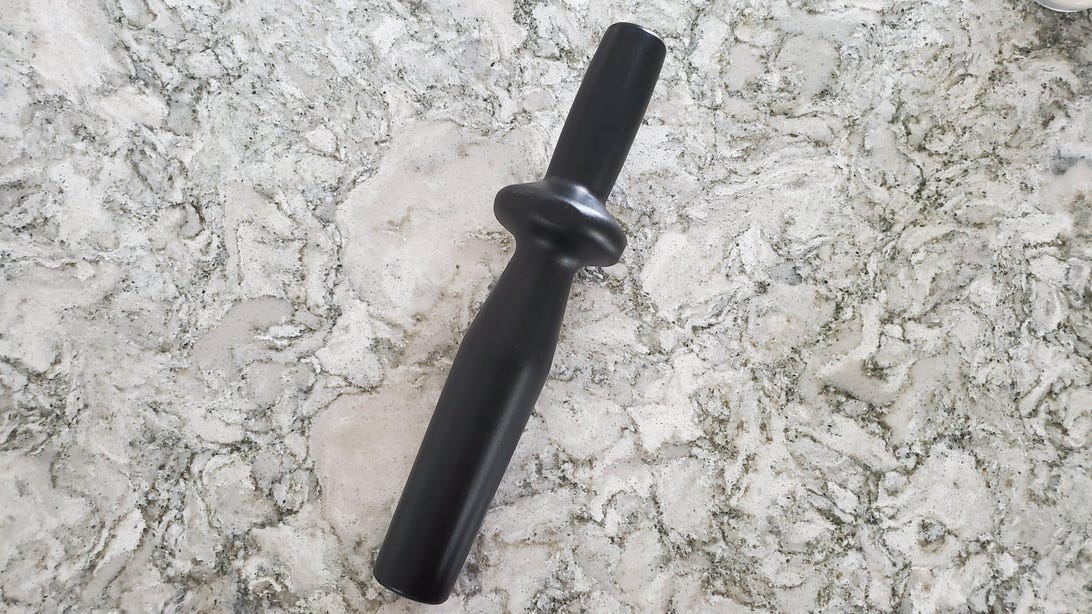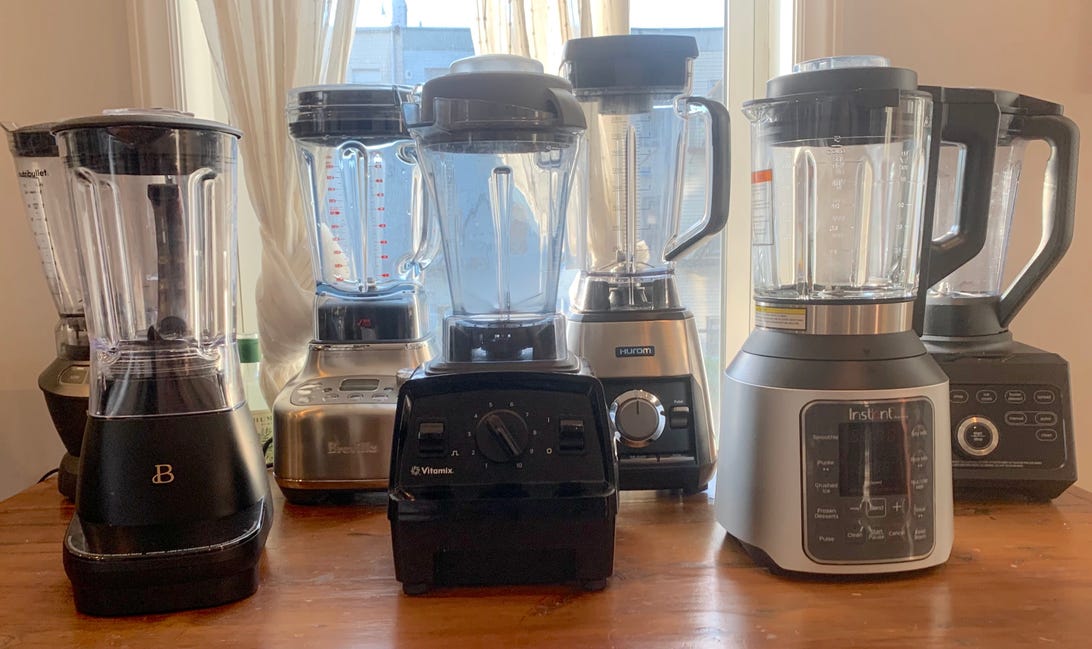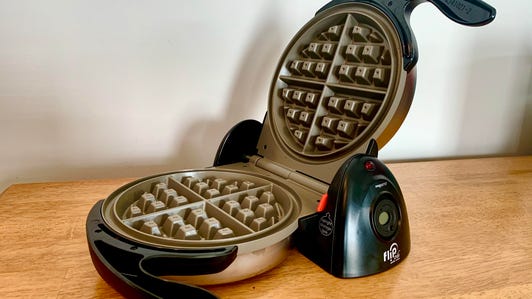Best blenders of 2021 – CNET [CNET]
Call me a nerd, but there’s something exhilarating about a good blender that’s hard to put your finger on. A proficient machine shows you power you can view in real time, be it for a healthy smoothie on Monday morning or a creamy, frozen drink on Friday afternoon. The best blenders do a whole lot more than blend drinks and that’s been true for some time, but the modern blender has gotten smarter, more powerful and more versatile. If your rickety $35 barely-a-blender blender has been collecting dust, it might be time for an upgrade.
Blenders aren’t necessarily a luxury item, but start looking and you’ll see that right next to the $50 models are others that cost $500. Figuring out the best blender for your needs requires understanding when it pays off to spend more and when you’re better off choosing something more basic, like when you just want to make easy, delicious smoothies or protein shakes and you don’t need the most powerful blender on the shelf.
One thing that was made clear as we put these machines through their paces: Dip below $100 for your blender, and you’re going to lose serious oomph and overall quality. The good news is you don’t have to spend much more to get a solid blender that’ll handle most of the daily tasks for the average home cook.
We tested 16 popular models to find out which ones make kitchen tasks a breeze. We considered the important qualities of a personal blender, from its ability to make a frozen drink (a powerful motor is a must!) to how quickly it can pulverize nuts into a powder or nut butter. Ready to blend? Keep reading. We update this best blender list periodically to include new blender models as well as update pricing and availability.
Other models we tested
Hurom Hexa Power Speed: If you’re looking for simple functionality and pure power, this is a blender we recommend. The $349 Hurom Hexa doesn’t have many fancy presets and functions (just smoothie, ice crush, soup, and pulse) but does have 1,600 watts of power to whip the crap out of anything that you put inside. It almost feels industrial grade and creates a vortex inside akin to something you’d see at a science museum. We also love how this blender looks with its shiny stainless steel armor. It’s also the tallest of the blenders we tested so it won’t store as easily as some of the others.
Oster Versa Pro Series: This Oster model is a good performer and includes a few extra features we found helpful. At around $220, it’s on the expensive side, but this price includes a beverage container and a set of bowls and blades for food processing. You’re almost getting two appliances here, a blender and a food processor. It also has a reverse blend button which is great for crushing ice and making nut flour.
Vitamix Explorian E310: I don’t have much bad to say about the $347 Vitamix Explorian. We used them plenty and loved doing it but it is still rather pricey when you get right down to it. That said, there’s a reason Vitamix has a cult-like following and this model will do just about any standard kitchen blending task and then some. Even if we had the $450 or more to spend on one of Vitamix’s premium models, we’d still opt for the Explorian. It also includes a great recipe book and custom tamper.
Braun TriForce: This is another blender with loads of brute force and it passed every test we gave it. The issue with Braun’s premium blender is the build and materials which don’t feel commensurate with the $220 price.
Beautiful by Drew Barrymore: We’ve been impressed by other products from this new line of budget-friendly kitchen appliances, including the electric kettle and air fryer. Sadly, the $59 blender did not pass muster. It’s serviceable, to be certain, but didn’t excel in testing and it feels a bit cheap. I’d also worry about the shelf life of its all-digital control panel.
Cuisinart SmartPower SPB-7CH: It’s hard to figure out what happened to this stalwart kitchen brand but this blender model, along with other Cuisinart appliances I’ve tested lately, have been disappointing. That’s especially true when you consider the bloated prices. The digital blender, which normally retails for $145, feels cheap and flimsy and netted mediocre results in testing.
KitchenAid K400: This $250 KitchenAid blender is beautiful, but left something to be desired when it came to performance for that price. It has five speeds, pulse and three presets. If you have your heart set on a colorful, quality blender, KitchenAid is still a good option.
Vitamix 5200: Variable speed and sturdy design make this $449 Vitamix 5200 blender a popular model for luxury blenders. Though considered a high performance blender, at such a high price, we weren’t wowed enough to recommend it. It struggled with cheese grating and we found it to be noticeably louder than other models.
Blendtec Total Classic: This popular $350 Blendtec blender worked well with frozen ingredients and crushed ice, making it a good choice for blending smoothies and making frozen cocktails. However, the Blendtec failed to grate cheese and the batter mixing preset was less effective than regular blending by speed.
Hamilton Beach Power Elite: Affordability aside, this $35 blender didn’t perform well enough to recommend. While it did have a nice glass bowl, the lid was infuriatingly hard to remove. It has only presets, so you’ll need to deduce which ones are actually low, medium or high.
Black & Decker Crush Master: At just $29, this blender will work if you really need something cheap in a pinch. But don’t expect excellence. It wasn’t able to handle large frozen strawberries or evenly mix pancake batter. Still, it could suffice for small jobs.
Breville Fresh & Furious: Great looks and bonus points for a cute name, but that’s not enough to recommend this $200 blender. Performance was average and it struggled to mix wet and dry ingredients.
How we test
Testing blenders isn’t just smoothies and ice-crushing. There are a lot of other recipes blenders work well for and these tests highlight how capable each model is when it comes to dry, large and coarse ingredients.
Ice
In a test of pure crushing power, we placed two cups of ice cubes into each blender. Counting the number of pulses it takes to get to fine, crushed ice gives a good indication of real-world chopping power. The three blenders we recommended above performed well.
The Braun, Breville Super Q, Vitamix Explorian, Hurom, Ninja and NutriBullet all took roughly four or five pulses to get to a very fine, almost shaved iced consistency. The Oster blender was close behind with six pulses. Other models didn’t fare so well on the crush ice test. Some took up to a minute of pulsing to get crushed ice and a few even left whole cubes after that.
Smoothie
A classic blender recipe, fruit smoothies were high on my list of recipes to test. This shouldn’t be a big stress test for any decent blender and so it really comes down to speed and consistency. We used two cups of orange juice and one cup of frozen strawberries to make the test smoothies.
While many of these tests yielded very similar results, a few worked faster than others. Not all blenders come with presets, but the ones that do almost always include a smoothie function. When possible, this is the mode we used. If there was no smoothie blender function, we followed the blender’s manual recommendation for smoothie making. This was usually around a minute on high.

Smoothie testing starts with whole, frozen strawberries and orange juice.
Molly Price/CNETThis is a relatively easy test and most blenders handled frozen ingredients well. Some were frothier and some slushier, but only the Black & Decker model left large chunks of frozen strawberry unblended.
Nut flour and butter
Blenders aren’t all about beverages. There are plenty of other uses, including grinding dry ingredients. For our dry ingredient test, we put a cup of almond pieces (unroasted) in each blender and pulsed until those pieces were reduced to a fine flour. A bit of a challenge for some blenders, but most were able to do this in about 10 to 20 pulses, with the Hamilton Beach model yielding noticeably coarser results.
Nut butter is a different story. Most blenders aren’t really designed for long running times and the level of processing needed to make a butter like almond butter or peanut butter. In fact, many recommend not running the blender for more than a few minutes at a time.

This nut flour is a bit coarse.
Molly Price/CNETOnly one Vitamix model showed real signs of progress toward almond butter in our testing with the nut flour and it still plateaued before achieving a good consistency. Most models simply whirred the dry ingredients upward and into the hard-to-wash crevices of their lids. If you’re set on making nut butters, we recommend a model like the Oster with an included processing kit, or a separate food processor.
Cheese
Did you know blenders can shred cheese? It’s true; some blenders can. We placed an 8-ounce block of cheese in each blender and pulsed until the entire block was shredded. This brought to light a few interesting design choices among some models. The Ninja, for example, lost the cheese round because multiple blender blade levels made it impossible to fit the cheese block in the blender. I had to cut it up into pieces.

Blenders can shred cheese and this NutriBullet did so in record time; just four pulses.
Molly Price/CNETBoth Vitamix models had some trouble with this particular test and bore holes in the cheese block without actually blending it, simultaneously melting what little cheese had been shredded as the machine heated up. Meanwhile, the NutriBullet, Ninja, instant Pot, Breville Surper Q and Hurom Hexa handled grating the cheese block in less than five pulses. The Oster managed to get the job done in eight.
Pancake batter
If you’ve seen our list of the best waffle makers, it should come as no surprise that pancake batter made an appearance in our blender testing. While I was happy to fire up the griddle and flip some cakes, mixing batter is an important test. It measures how easy or difficult it is for the blender to mix wet and dry ingredients.
Mixing is typically done on low speeds, but there are a few blenders with mixing presets, like the Breville Fresh and Furious. Still, it left dry chunks unincorporated after three minutes. The best dry/wet mixers were the NutriBullet and Breville Super Q; both yielded a smooth, lumpless batter in under 18 seconds of blending.
Blender buying tips
Like most appliances, you should think about how often you’ll use it and for what tasks. Many budget blenders could handle a few smoothies every summer. It’s not worth spending $200 on a blender you’ll use for two occasions each year. If you’re mixing batters, grinding dry ingredients and crushing ice on a regular basis, however, it might be wise to invest in a quality model. Here are a few things to keep in mind.
Accessories
With a conventional blender, accessories can make all the difference. A blender that comes with a tamper is great for getting those last stubborn bits into the blender blades and it’s one item I would highly recommend checking for when you buy a blender. Several models we tested included one in the box. You can purchase them separately, but they’re often model-specific with a ring guard at the top to keep you from plunging the tamper into the blender blades.

A tamper is included with some blenders and it’s a useful tool for moving ingredients safely toward the blades.
Molly Price/CNETIf you’ll be making smoothies and frozen drinks, a blender with a special set of travel blender cup containers makes getting out the door one step easier. If you’re blending larger, more dense foods for recipes, consider a model that has either a food processing bowl and wheel blade option or something with high-power wattage. Ninja and NutriBullet, among other brands, also make these kits for travel containers and processors.
Preset preference
Next, consider your preference for specific modes versus speeds. We found some modes to be effective and helpful, while other blenders worked better when we took over and chose a speed for my ingredients, watching for when to stop. Some models offer simply low, medium and high modes. Others, like many Vitamix models, are variable, with speeds 1 to 10 on a dial. There are models with task-specific modes like Smoothie, Mix, Ice Crush and Self Clean, too. More important than presets, a blender with a pulse option ensures you’ll be able to get those pesky last few pieces mixed in.
While it comes down to preference, in my opinion, you’ll have more control over your result without a preset. Yes, you’ll need to keep watch and be a bit more hands-on, but it’s easier to be sure things don’t get too blended, overheated or stop before everything is truly mixed.

I’d like to see you try to get this many blenders to hold still for a photo.
David Watsky/CNETDesign
Blenders don’t have to be boring. KitchenAid models come in a rainbow of colors. The Oster Versa Pro above looks pretty sporty and the Breville Super Q and Hurom Hexa both had lovely finishes and a sturdy feel. Don’t forget to consider aesthetics if this appliance will live on your countertop.
If your blender will be on your kitchen counter, we recommend measuring the height between your countertop and your upper cabinets. A few models we tested including the Hurom and Breville Super Q may not fit beneath standard cabinets and would inhibit you from sliding it to the back of my counter when not in use. Unlike large appliances, small ones don’t come in standard measurements, so a few minutes of measuring could save you a storage headache.
No matter which blender suits your needs, a good one can open up a world of new recipes, simplify your culinary prep work and deliver delicious treats on hot summer days. Oh, and give you a little thrill while it’s at it.
More ways to level up your culinary skills
- Best food processor of 2021: Braun, Cuisinart and more compared
- Best chef’s knives for 2021
- Best electric kettle of 2021
- Best Instant Pot for 2021
- Best cold-brew coffee maker of 2021
- Best rice cookers for 2021: Oster, Tiger and more
- Best kitchen tools for making restaurant-quality food at home
- Become a grillmaster this summer: 5 grill tricks you should know
- How to use up all the random ingredients in your pantry

![best-blenders-of-2021-–-cnet-[cnet]](https://i0.wp.com/upmytech.com/wp-content/uploads/2021/09/39879-best-blenders-of-2021-cnet-cnet.jpg?resize=800%2C445&ssl=1)



![how-nvidia-is-harnessing-ai-to-improve-predictive-maintenance-[venturebeat]](https://i0.wp.com/upmytech.com/wp-content/uploads/2022/03/58112-how-nvidia-is-harnessing-ai-to-improve-predictive-maintenance-venturebeat.jpg?resize=390%2C205&ssl=1)
![crypto-exchange-binance-walks-away-from-rival-ftx-trading-acquisition-–-cnet-[cnet]](https://i0.wp.com/upmytech.com/wp-content/uploads/2022/11/95724-crypto-exchange-binance-walks-away-from-rival-ftx-trading-acquisition-cnet-cnet.jpg?resize=390%2C205&ssl=1)